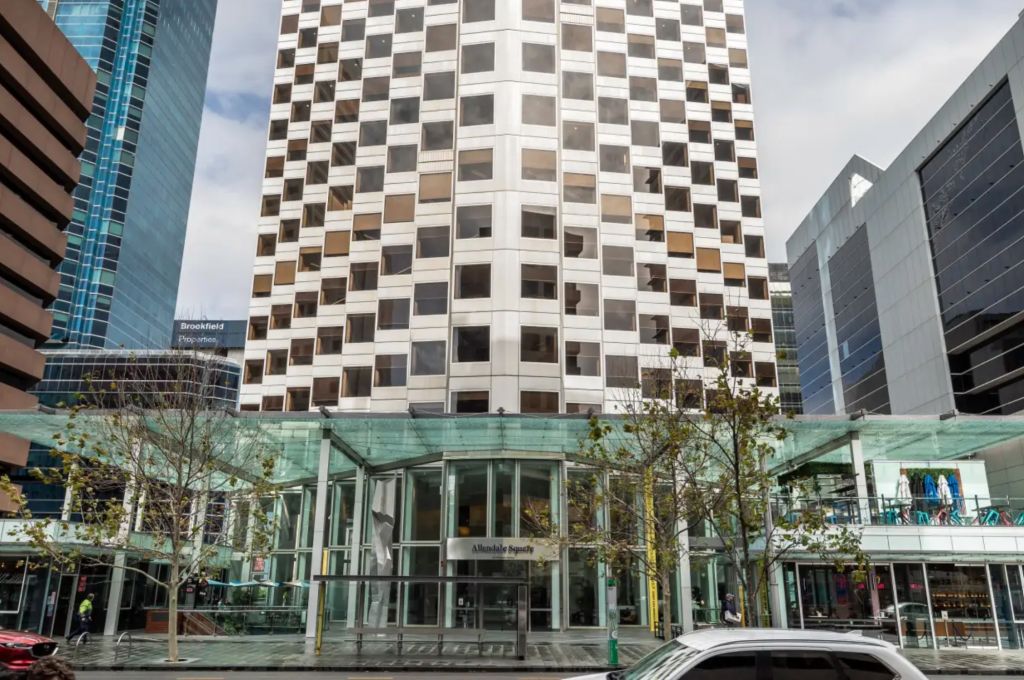
OPINION: How far will commercial values fall during the reset?
Opinion
Commercial property sales usually surge in the December quarter, ending the year in a crescendo of deals.
Not this time. With just over three weeks until the deal makers break – maybe heading somewhere less pricey than Gstaad this year – the fourth quarter of 2022 is shaping as the second slowest since 2016, and, according to MSCI Real Assets, only marginally better than the pandemic-shuttered last quarter of 2020.
In essence, commercial property is repricing to the new cost of money.
Unlike the stock market, which reprices with a great grinding of gears, commercial property stalls during repricing as buyers and sellers quietly test each others’ determination.
Today’s graph, from MSCI Real Assets, compares commercial property sales priced above $1 million and settled in the first two months of the quarter – from October 1 to November 29.
MSCI’s head of Pacific real assets research, Ben Martin-Henry, says the numbers are preliminary and further deals are expected. But at this point “a significant slowdown is under way” with the sales 43 per cent below the average of the past decade.
He says the slowdown is caused by “the various global macro-economic pressures pervading the economy, a general feeling of uncertainty, and, of course, the substantial increase in capital cost”.
Andrew McCasker, the managing director, debt & structured finance, in the Pacific for global real estate heavyweight CBRE, says transaction volumes are subdued while the market debates asset prices.
“There is still capital for funding but vendors have not got the desire to meet purchasers’ bids,” he says. “At the moment there is no incentive or need to lower prices.”
John Marasco, the managing director, capital markets and investment services at global agency Colliers International, says a “reset in the market” is holding up transactions.
He says that the reset will vary between, and even within asset classes, depending, in many cases, on the asset’s ability to attract, and hold, occupants.
He stresses that unlike the GFC, the market today has support from global investors, and from the superannuation funds, and, that debt is available from both bank and non-bank lenders.
Of course the new debt comes at a price. For prime borrowers, that cost of debt – base rate plus margin – has effectively doubled since the nadir of interest rate cycle, crunching interest coverage ratios, and reducing the amount of leverage.
Rising yields
So how far will values fall through the reset?
MSCI’s Martin-Henry notes that several sectors experienced a rise in yields during the third quarter which, unless balanced by a significant increase in income, is effectively a fall in value.
Offices in Sydney, Brisbane and Perth, but not Melbourne, saw a rise in yields; so did regional, sub-regional and neighbourhood shopping centres but not city centre retail or large format retail; and, “most notably the Sydney industrial sector saw the first increase in cap rates in six years”.
The December 30 valuations, due out over the next month, should show a touch of the wind back, but only a touch, until further transaction evidence emerges.
Last month, Barrenjoey’s head of real assets research Ben Brayshaw forecast that cap rates in the listed Real Estate Investment Trust sector would rise 40-100 basis points.
Which means book values would wind back about 11 per cent for retail, 7.5 per cent for premium office but 35 per cent for B-grade buildings, and 2 per cent for logistics property. Some industrial values will actually rise but others will fall 10 per cent.
“This cycle is proving to be different, which makes it challenging to draw parallels with the past,” he wrote,
Brayshaw noted, that unlike during the global financial crisis, REIT balance sheets today can absorb a decline in valuations and, with debt covenant issues unlikely to come into play, the “REITs shouldn’t need defensive equity”.
“We believe that inflation-linked income growth, tight supply/demand across most sectors, and moderate leverage, will limit the correction,” he wrote.
Demand for quality
Another way to look at the issue is to see what is being sold, to whom and why.
The REITs are largely sellers, with Brayshaw estimating the sector aims to divest $5 billion to $10 billion worth of assets.
Charter Hall managing director David Harrison told his AGM that equity flows were favouring his “larger pooled and partnership investors” – like offshore sovereign funds and the domestic superannuation funds – who were “enjoying the greater opportunities afforded in transaction markets with reduced competition.”
This week, funds managed by Centuria Capital and MA Financial will settle the $223 million purchase of Allendale Square in Perth from Mirvac after both raised $70 million in new equity from wealthy individuals and large financial groups.
But look at the return. The forecast distribution yield is a solid 7.25 per cent, and, with a planned repositioning of the tower, the Internal Rate of Return on equity is expected to be over 11 per cent.
“There is still good demand for good quality product,” says MA Financial’s managing director of asset management, Matthew Lane.
Centuria’s joint chief executive, John McBain, acknowledges that capital raising is slower at the moment but possible for those who understand their investors.
And what about the real estate groups who this year will miss the Christmas sales commissions?
Surprisingly, while sales are down, office leasing activity is up.
In the year to October, Colliers International has signed up 8 per cent more space – over half a million sq metres around the country – and 6 per cent more transactions than in 2021, with tenants driven by a “flight to quality” and “flight to experience” in core CBD and fringe locations.
There’s a lesson for capital markets.











